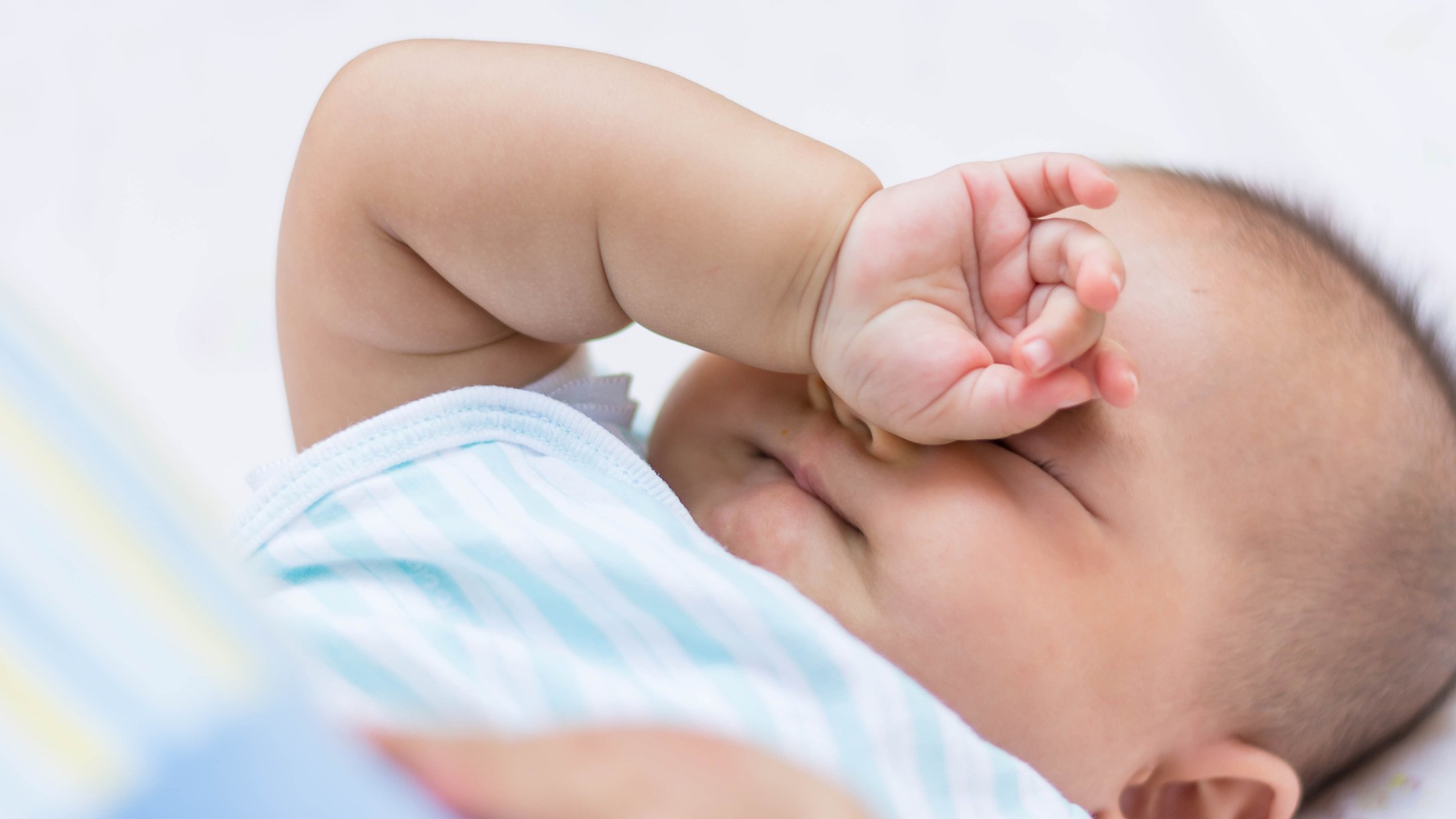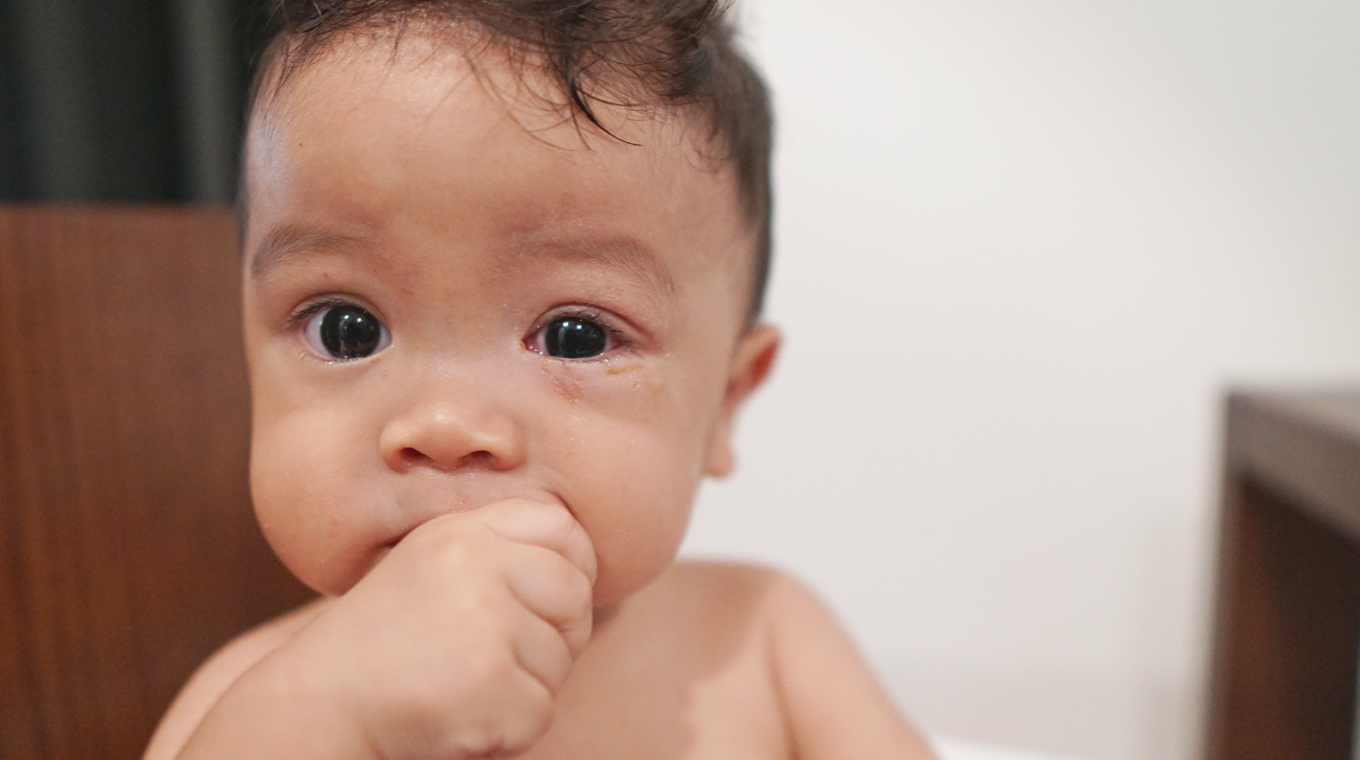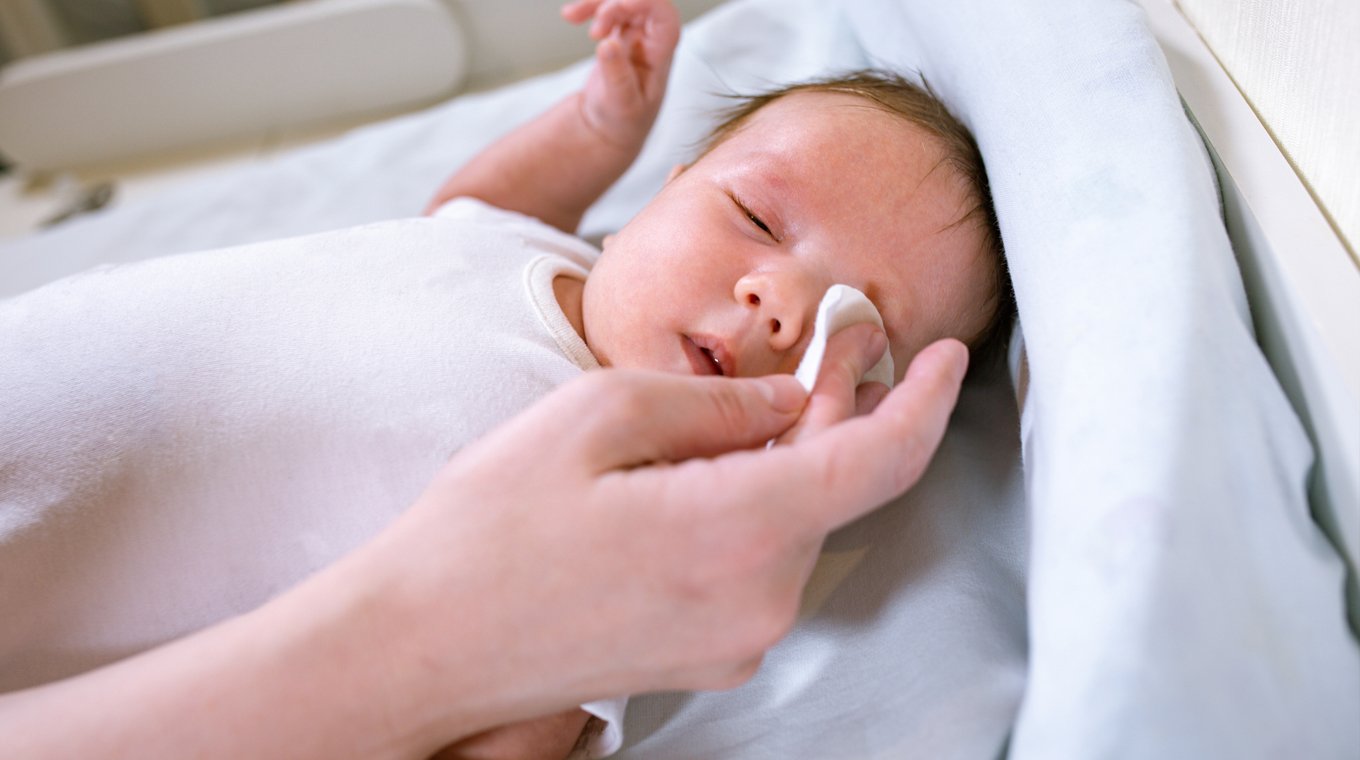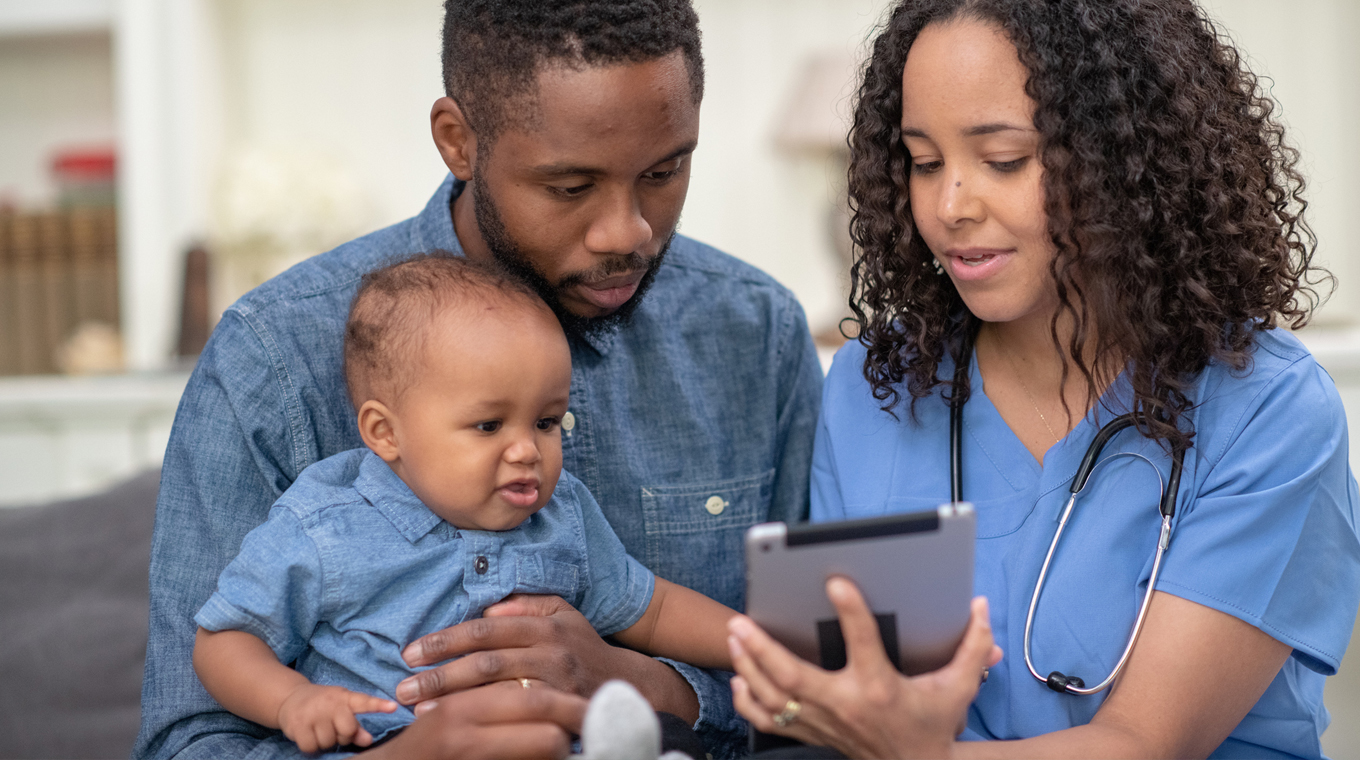
In this article:
While we usually associate pink eye with young children's grubby hand or with adults with dirty makeup brushes, we don’t often think of pink eye in babies. Though pink eye is a common childhood condition and usually mild, if you have a newborn, they can develop serious complications from the condition. The Centers of Disease Control and Prevention (CDC) recommend you take your new baby to see a doctor immediately if you notice any symptoms.
What is pink eye and its symptoms?

Pink eye occurs when the thin, clear tissue lining the inside of the eyelid (conjunctiva) and the white part of the eyeball become inflamed. The swelling and redness causes blood vessels in the white part of the eye to become more visible, giving the eye a pink or reddish hue.
“Just like the common cold, pink eye, also known as conjunctivitis, can be viral or bacterial,” explained pediatrician Dr. Steph Lee to Mom.com. “It can also be from allergies or simple irritation.”
Though the symptoms can vary, they often include:
- Inflammation of the inside of the eyelid or the white part of the eyeball – Producing more tears than usual
- Thick, yellow discharge that crusts over the eye or eyelashes — especially after sleep
- Clear, yellow, white, or green discharge from the eye
- Itchy, irritated, or burning eyes
- Gritty feeling in the eyes
Common treatments for pink eye

If pink eye is caused by bacteria or a virus, it is contagious and can spread quickly through a household. For those of us who have witnessed one pink eye case sweep through our entire family, our response is generally panicked cleaning.
Mom of four Whitney Cornelison seconds that idea. “Disinfect everything that could have been touched and will be touched. Don’t put your hands near your eyes and wash your hands,” she told Mom.com
When conjunctivitis is bacterial, often the eye discharge will really start to crust the eyes shut and cause a lot of swelling. You will need to go to the doctor and get a prescription for antibiotic eye drops or an ointment. The eye drops can sting, so it can be hard enough to get babies to tolerate eye drops several times a day. One thing you can do to help ease the sting is to put the drops in the refrigerator. Another thing is to put the drops on the inner corner of your baby’s closed eye. When they open their eyes, the medicine will flow into it.
According to Dr. Lee, not all pink eye requires antibiotic drops. “The best thing to do when your child’s eyes are red is to first try rinsing out with warm water and see if it helps,” the spokesperson for the American Academy of Pediatrics (AAP) told Mom.com.
“If your child also has a runny or stuffy nose, chances are it is a viral infection. In that case, warm compresses over the eyes can help soothe them and double as a good wipe for any yellow discharge,” Dr. Lee recommended.
“My son caught pink eye when he was about 10 months old,” Lisa Favre told Mom.com. “We used the eye drops as prescribed by his pediatrician down to a T. We would constantly wash hands — myself, my husband, and my son. I changed and washed pillow cases daily until his infection was gone.”
When to see a doctor for pink eye

As mentioned before, if your newborn baby has pink eye symptoms within the first two weeks after birth, seek a healthcare provider. For infants, pink eye can sometimes be caused by sexually transmitted infections like chlamydia or gonorrhea — and that can be potentially serious. Because of the possible health complications, many states now require hospitals to put drops or smear ointment over a newborn’s eyes in order to prevent conjunctivitis.
But if your baby is not a newborn, sometimes you can wait 5 to 7 days and see if it will clear up on its own. However, you should take your baby to their pediatrician if they have pink eye along with any of the following:
- Moderate to severe pain in their eyes
- Sensitivity to light or blurred vision
- Intense redness in eye(s)
- A compromised immune system (for example, cancer or HIV)
- Pre-existing eye conditions that put your baby at risk for complications or severe infections
- Worsening or non-improving symptoms after using antibiotics for 24 hours




